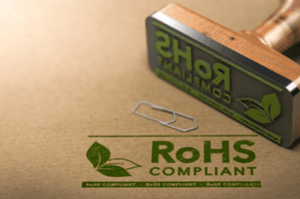
On 22 July 2019 the latest incarnation of RoHS (the Restriction of Hazardous Substances) will come into full effect across the EU.
So what's changed? And what exactly are the implications for UK electronics manufacturers?
In this blog post we provide a recap of what RoHS is, why it matters and the steps that Original Equipment Manufacturers (OEMs) will need to take to ensure compliance.
What is RoHS?
RoHS originated in the European Union in 2002 with the aim of restricting the use of specific hazardous substances found in the manufacture of electrical and electronic equipment (EEE) that have been identified as presenting a risk to human health and the environment.
The original directive 2002/95/EC known as RoHS laid down restrictions in relation to six key hazardous substances:
- Lead (Pb) - found in printed circuit board finishes, paints and pigments
- Mercury (Hg) - used in lighting applications and automotive switches
- Cadmium (Cd) - used in plastic pigmentation and photocells
- Hexavalent Chromium (CR VI) - used to prevent corrosion of metal finishes
- Polybrominated biphenyls (PBBs) - primarily used as flame retardants
- Polybrominated Diphenyl Ethers (PBDEs) - primarily used as flame retardants
How has RoHS changed?
In 2011 came the publication of the directive 2011/65/EU, known as RoHS 2 or RoHS Recast, which took formal effect in July 2013. A significant addition to RoHS 2 was the inclusion of the CE-marking directive - the requirement for a certification mark that indicates that a product conforms with all health and safety and environmental protection standards within the European Economic Area.
The newest update of the directive 2015/863, known as RoHS 3, adds another four substances to the original list of six. All the new additions are forms of phthalates - the family of chemical compounds used to add flexibility, durability and transparency to plastics:
- Bis(2-ethylhexyl) phthalate (DEHP) - a plastic polymer (plasticiser) previously used in cable and wire insulation, as a dielectric in large high-voltage capacitors, as a processing aid for rigid polymers and as a softener in a wide array of PVC medical devices.
- Butyl benzyl phthalate (BBP) - occasionally used as a co-plasticiser in wire and cable; as an additive in flexible adhesives, coatings and inks; and in polyurethane adhesives, polyurethane rubbers and acrylic-based polymers.
- Dibutyl phthalate (DBP) - used as a plasticiser in flexible varnishes, nitrocellulose paints and paper coatings; to "size" glass fibre and to add flexibility to rubbers and paints.
- Diisobutyl phthalate (DIBP) - a plasticiser known to hold very similar properties to DPB but generally not known to be used in electronic products.
Who needs to comply?
If you're an electronics manufacturer who sells applicable electronic products or sub-assemblies to EU or countries - or if you're supplying to resellers or distributors who sell products on to RoHS countries - then RoHS 3 compliance applies to you.
For UK OEMs this means ensuring that none of your products exceed the maximum prescribed levels of any of the 10 restricted substances on the RoHS list. You will also be required to keep records to demonstrate this compliance and to hold onto these records for a minimum of 10 years.
Required compliance record-keeping can also include providing evidence of CE marking, proof of compliance throughout the production process and along the entire supply chain, records of conformity assessments and the self-reporting of any instances of non-compliance.
In the event that a product is found (or is suspected) to be non-compliant, all parties will need to take steps to inform UK Safety and Standards, to notify the supply chain and to take appropriate remedial action, whether by fixing, quarantining, recalling or withdrawing the item.
Further guidance
For a deeper understanding of RoHS, including additional guidance for manufacturers, importers and distributors, the National Measurement & Regulation Office have produced a 39 page report which can be downloaded here

